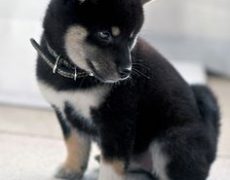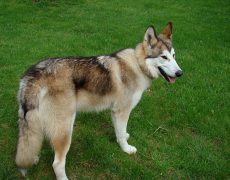Kugsha Dog
The Kugsha dog is a breed of rare, domesticated dogs that were previously used as working dogs. They are characterized by a large, well-defined body with the looks of a wolf having a massive head with erect, pointy ears, almond-shaped eyes, and a broad muzzle. Their legs are sturdy and well-built, while the tail is long and bushy.
Kugsha Dog Pictures
- Amerindian Malamute
- Kugsha Dog Images
- Kugsha Dog Photos
- Kugsha Dog Pictures
- Kugsha Dog Puppies
- Kugsha Dog
- Kugsha Dogs
- Kugsha Dog Breed
Quick Description
| Also known as | Amerindian Malamute |
| Coat | Dense, double, smooth, straight |
| Colors | Black & Brown, Merle, Spotted, Brindle, Speckled, White, Cream |
| Type | Working Dog, Watchdog |
| Group (of Breed) | Purebred |
| Lifespan/Expectancy | 12 to 15 years |
| Weight | 60-106 pounds |
| Height (size) | Large |
| Life Span | 12 to 14 years |
| Litter Size | 4 to 6 puppies |
| Personality Traits | Intelligent, independent, affectionate, playful, adventurous, loyal |
| Good with Children | No |
| Good with Pets | Yes |
| Shedding | Yes |
| Litter Size | 4-6 puppies |
| Availability | Rare |
| Adaptability | Does not do well in hot climate |
| Hypoallergenic | No |
| Country of Origin | Russia |
| Competitive Registration/ Qualification Information | Not recognized |
Video: Husky and Kugsha Dogs Playing
History & Development
The Kugsha breed carries wolf genes and originated in Pennsylvania’s Wolfen Kennel in the US. They were earlier used to pull freights and other weights.
Previously, this breed was marketed as the American Husky. But this name didn’t go over well and was later changed to Kugsha. The name is an anachronism of the names of three wolf-hybrid breeders – Kuhlwind (‘Ku’), Gorden Smith (‘GS’) and Habben (‘Ha’).
Temperament and Behavior
Kugshas are dogs with a primitive behavior like most other Northern breeds, and hence, their training needs to begin at a very tender age. However, they have a high level of intelligence with an eagerness to please their owners and can pick up training quickly. They make good watchdogs but are not suitable for apartment life.
Kugshas would create a strong bond of affection with their family members and do not prefer staying alone for extended periods of time. Because of their predatory instincts, it is not always safe for the owners to leave small children alone with them unless the child is at least 16-17 years old. Kugshas are, however, good with other pets in the family, including dogs.
Care
Exercise
They need vigorous activities daily. A daily walk, a considerable amount of playtime and jogging are a must. Make sure you always let your dog play inside an enclosed area. While your dog is playing, keep its leash away.
Grooming
Care must be taken that your dog is not exposed to bright sunlight for long, especially during summer, since they get heated up very quickly. These dogs have a dense coat. Brush it 2-3 times a week to keep it clean and healthy.
Health Problems
Otherwise a healthy breed, issues common to large dogs like hip dysplasia, patellar luxation, arthritis might show up. Visit your vet for an annual checkup.
Training
- Socialization is the primary training of the Kugsha. Begin training from the prime of its life by socializing it as and when you get a chance. Allow your puppy to play some interactive games with your kids, and ask them to give it treats when it wins. Take your pup out to public places (where dogs are allowed) like children’s parks, malls, or even for a long drive. Buy fun toys for your puppy, give it company as much as possible, get it acquainted to your friend circle, and so on. A continuous process of socializing with humans will help it grow up as an even-tempered pet.
- It’s you who should dominate your puppy and not the vice versa. Teach it the Follow me, Sit, Wait, Stop, Come back commands, and use them practically whenever you need. Train it to follow your footsteps both indoors and outdoors. Such training will develop a natural tendency in it to accept you as its pack leader.
- With their innate prey drive, Kugshas are prone to develop destructive habits quickly. Encourage your puppy to play more and more games, and discourage it from running after small animals. Take part in games with your pet to give it a chance to get your much-cherished company. Hide toys and foods in different places in the garden, and let your dog find them. Such moments of fun will help it associate the ‘games’ with ‘winning prizes’ as well as ‘pleasing’ you. At the same time, it will also keep your dog busy rather than running after squirrels or hunt down lizards.
Diet/Feeding
Large dogs like Kugsha need 3-5 cups of dry dog food every day, depending upon how big your dog is. You can also serve them bony meat and eggs (both raw), and semi-cooked or tinned fish (like salmon and tuna).













